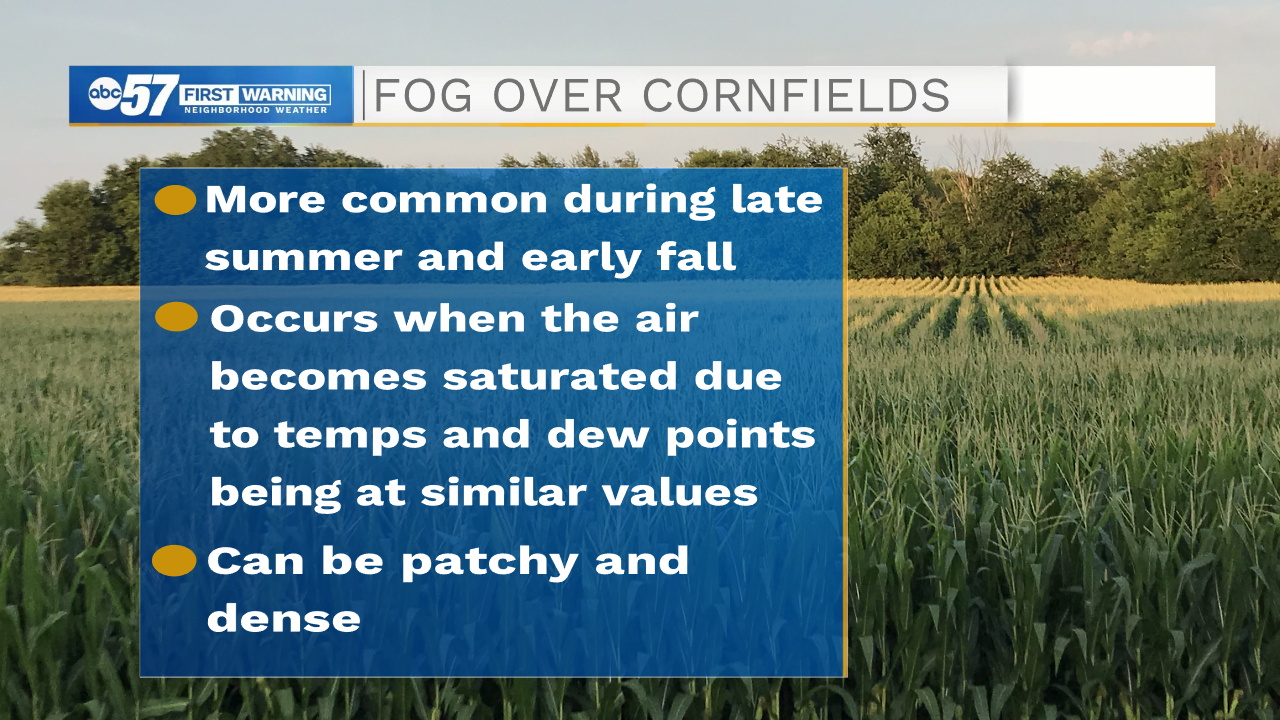
-
0:14

Elkhart family spreads holiday cheer with Christmas display
-
1:03

Humane Society of St. Joseph County offers free holiday pet adoptions
-
3:13

Trump outlines futuristic vision for U.S. Navy as Venezuela tensions...
-
6:10

ABC57 spoke one-on-one with Congressman Tim Walberg
-
3:53

Marshall County Regional Sewer District dissolves, county takes...
-
2:15

Explaining inflation, jobs data and holiday spending predictions
-
8:50

Hungry for the Holidays
-
2:22

Family searches for dog that ran loose during hostage situation...
-
1:25

Holiday rush causes 4th biggest day in SBN history
-
1:18

Mild weather continues with rain by Christmas Eve
-
0:13

One dead after two semi-trucks crash, catch fire on I-94 Monday
-
1:40

Suspect in SWAT incident in critical condition from police gunfire
This time of year you may notice more frequent foggy conditions. From late summer to early fall, our temperatures during the morning hours start to get cooler. When these cooler morning temperatures fall to around our dewpoint temperatures, our air becomes more saturated. Saturated air then condenses and forms fog. We can see an isolated amplification of this fog in certain areas, one of which is corn fields.

Corn field fog is formed through a similar process. Corn stalks hold a lot of moisture, that moisture then turns into water vapor during a process called evapotranspiration. Once this water vapor cools, it condenses and forms areas of thick fog around the water source. As you are driving during the morning, especially in the months of August and September, you will see this phenomenon.

Whenever encountering dense fog always remember to slow your speed and keep your low beam lights on.

